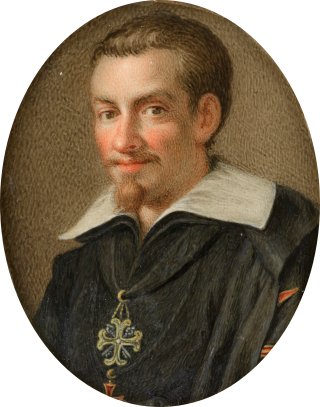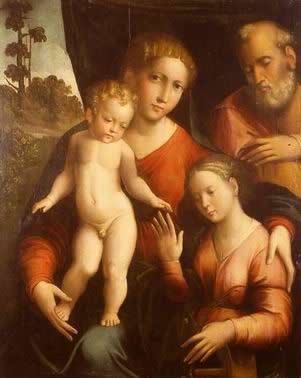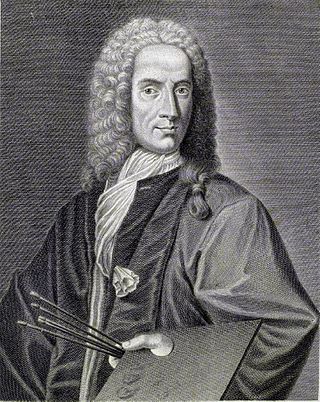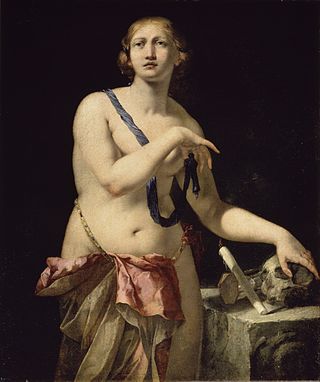
Lorenzo Lotto was an Italian Renaissance painter, draughtsman, and illustrator, traditionally placed in the Venetian school, though much of his career was spent in other north Italian cities. He painted mainly altarpieces, religious subjects and portraits. He was active during the High Renaissance and the first half of the Mannerist period, but his work maintained a generally similar High Renaissance style throughout his career, although his nervous and eccentric posings and distortions represented a transitional stage to the Florentine and Roman Mannerists.

Carlo Crivelli was an Italian Renaissance painter of conservative Late Gothic decorative sensibility, who spent his early years in the Veneto, where he absorbed influences from the Vivarini, Squarcione, and Mantegna. He left the Veneto by 1458 and spent most of the remainder of his career in the March of Ancona, where he developed a distinctive personal style that contrasts with that of his Venetian contemporary Giovanni Bellini.

Treviso is a city and comune (municipality) in the Veneto region of northern Italy. It is the capital of the province of Treviso and the municipality has 85,188 inhabitants. Some 3,000 live within the Venetian walls or in the historical and monumental center; some 80,000 live in the urban center while the city hinterland has a population of approximately 170,000.

Jacques Courtois or Giacomo Cortese, called il Borgognone or le Bourguignon was a Franche-Comtois–Italian painter, draughtsman, and etcher. He was mainly active in Rome and Florence and became known as the leading battle painter of his age. He also created history paintings and portraits. He became a Jesuit later in life but continued to paint.

Guillaume Courtois or italianized as Guglielmo Cortese, called Il Borgognone or Le Bourguignon, was a Franc-comtois-Italian painter, draughtsman and etcher. He was mainly active in Rome as a history and staffage painter and enjoyed high-level patronage. He was the brother of the painters Jacques Courtois and Jean-François Courtois.

Francesco Vanni was an Italian painter, draughtsman, printmaker, publisher and printer active in Rome and his native city of Siena.

Carlo Maratta or Maratti was an Italian painter, active mostly in Rome, and known principally for his classicizing paintings executed in a Late Baroque Classical manner. Although he is part of the classical tradition stemming from Raphael, he was not exempt from the influence of Baroque painting and particularly in his use of colour. His contemporary and friend, Giovanni Bellori, wrote an early biography on Maratta.

Innocenzo Francucci, generally known as Innocenzo da Imola, was an Italian painter and draftsman.

Sebastiano Ricci was an Italian painter of the late Baroque school of Venice. About the same age as Piazzetta, and an elder contemporary of Tiepolo, he represents a late version of the vigorous and luminous Cortonesque style of grand manner fresco painting.

Francesco Trevisani was an Italian painter, active in the period called either early Rococo or late Baroque (barochetto).

Giuseppe Angeli was an Italian painter of the late-Baroque, known for depicting both genre and religious subjects.

Antonio Zanchi was an Italian painter of the Baroque, active mainly in Venice, but his prolific works can also be seen in Padova, Treviso, Rovigo, Verona, Vicenza, Loreto, Brescia, Milano, and Bergamo, as well as Bavaria.

Tomaso Barisini, better known as Tommaso da Modena and sometimes called Tomaso Baffini was an Italian painter of the mid-14th century.
Pietro Ricchi was an Italian painter of the Baroque period, born in Lucca.
Matteo Ponzone was an Italian painter of the Baroque period, active between 1630 and 1700 mainly in Venice. He was a pupil of Santo Peranda. Several of his works are in the churches and public buildings of Venice, particularly in San Giorgio Maggiore, and in the church of the "Padri Croceferi".

The House of Loredan is a Venetian noble family of supposed ancient Roman origin, which has played a significant role in shaping the history of the Mediterranean world. A political dynasty, the family has throughout the centuries produced a number of famous personalities: doges, statesmen, magnates, financiers, diplomats, procurators, military commanders, naval captains, church dignitaries, and writers.

Pietro Loredan of the noble Loredan family, was the 84th Doge of Venice, reigning from 1567 to 1570.
Domenico Mancini was an Italian painter of the Venetian mainland, painting in a High Renaissance style. Mancini was either a pupil or a close follower of Giorgione and Giovanni Bellini. He is said to have worked alongside Pietro Maria Pennacchi.

Andrea da Murano, also known as Andrea di Giovanni was an Italian painter, active mainly in Venice and the Venetian mainland.

Pietro Negri was an Italian painter in the Baroque style who belonged to the so-called "tenebrosi".


















